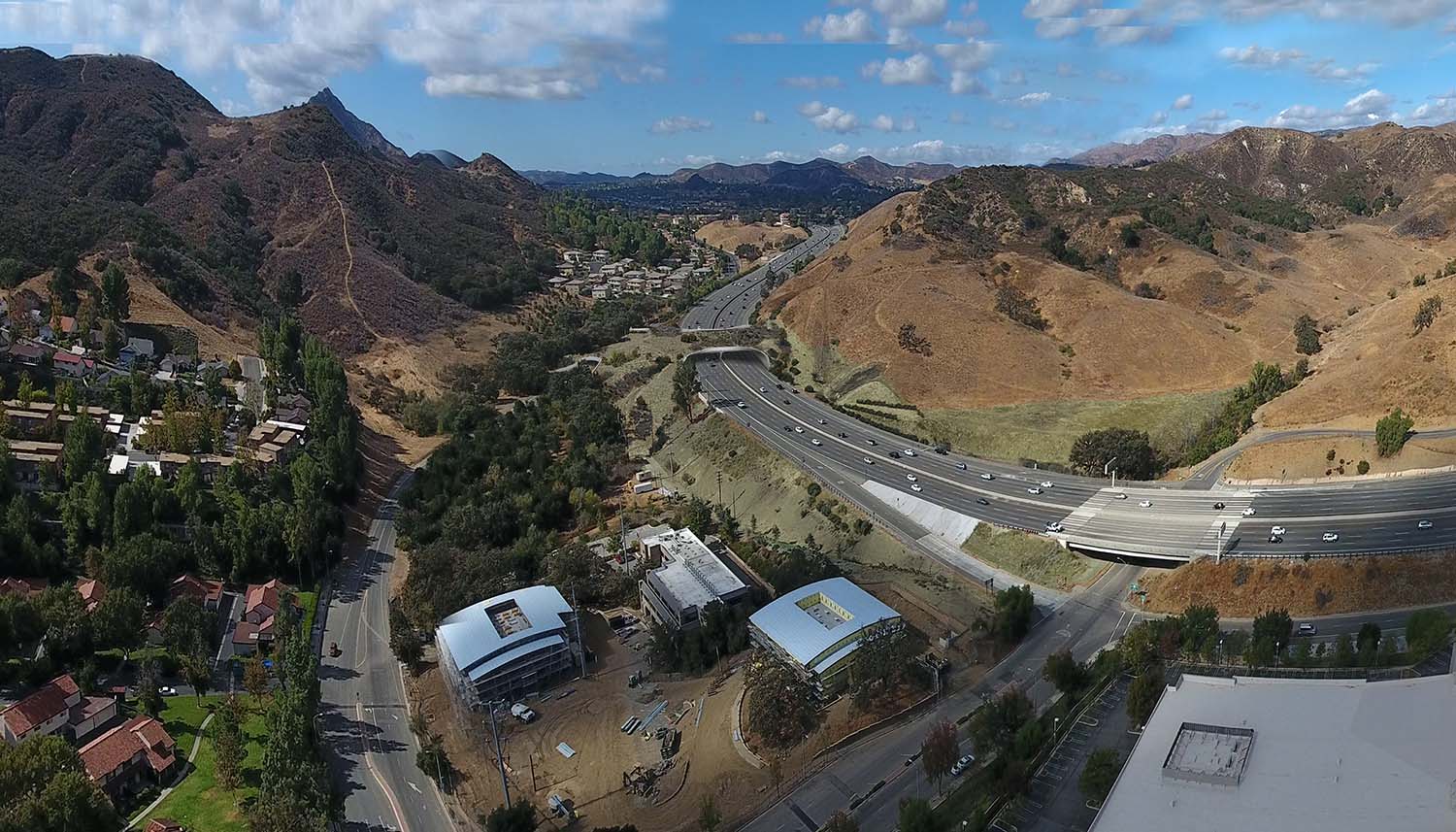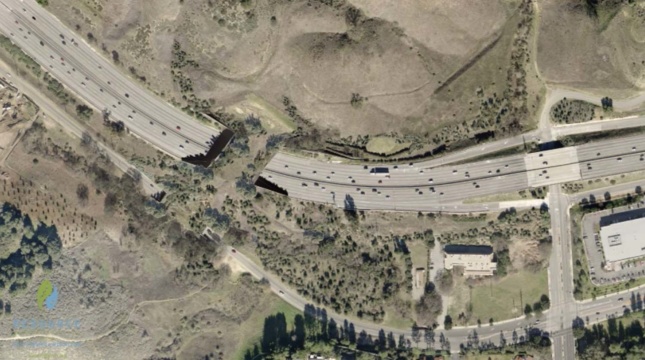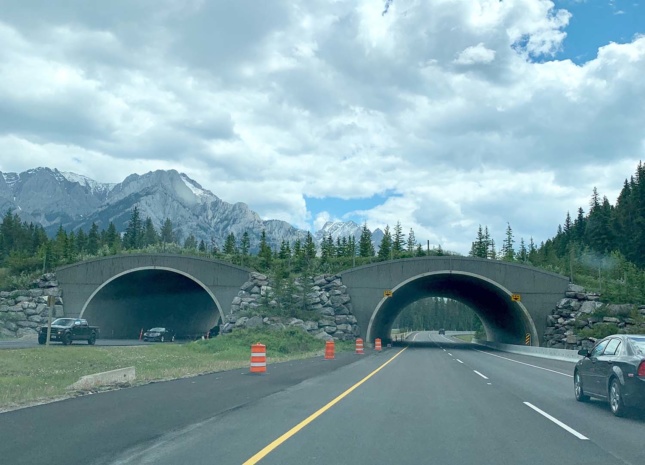PUMA PASS
California will build world’s largest wildlife crossing

A rendering of what the Liberty Canyon overpass could look like, released by the Resource Conservation District of the Santa Monica Mountains (RCDSMM) and the National Wildlife Federation California in 2015. (Clark Stevens, Architect/Raymond Garcia, Illustrator, courtesy RCDSMM)
Cut off from surrounding land by the ten-lane expanse of Route 101, Southern California’s Santa Monica Mountains are a challenging habitat for indigenous wildlife. Ecologists have long insisted that the freeway poses a serious threat to the genetic health of certain animal populations, including bobcats, coyotes, deer, fence lizards, and mountain lions. The mountain lions are particularly at risk, with some experts suggesting that the local population could be extinct within 15 years if individuals are not given access to mating partners in other parts of the region.
Fortunately, California state authorities are working to implement a solution that has proven effective in other parts of North America and Western Europe. Officials are currently in the final stages of design development for a 200-foot-wide wildlife crossing, which will be the largest animal bridge in the world upon completion. The bridge will span a portion of the 101 in Liberty Canyon, approximately 35 miles northwest of central Los Angeles, making this the first example of a wildlife crossing in such close proximity to a major urban center.

A rendering of what the wildlife crossing in Liberty Canyon could look like, released by RCDSMM in 2015. (Courtesy RCDSMM)
The wildlife crossing will thus operate essentially as an overpass for a wide variety of animals, providing a strip of native landscaping that connects each side of the freeway. In addition to native plantings, the crossings will be equipped with sound barriers to mitigate the negative effects of vehicular noise on animal comfort. Wildlife fencing, which is designed to prevent native animals from crossing into dangerous roads, will line both sides of Route 101 so that creatures are guided towards the overpass. Beyond protecting native fauna from deadly accidents and population decline, the overpass will likely reduce emergency response and repair costs from vehicle-on-wildlife collisions.
Bridges like the one proposed for the Santa Monica Mountains require an immense amount of behavioral research to ensure effectiveness, including studies of which types of plant life and overall environmental factors are preferred by certain species. As existing examples have shown, some animals take longer than others to become accustomed to artificial crossings. Coyotes and deer, which have comparatively high levels of contact with human infrastructure and settlements, tend to use bridges almost immediately after completion, whereas more isolated species like cougars and bears can take years to gain confidence in the structures.
Wildlife overpasses are already in use in Wyoming, where endangered pronghorn herds cross designated bridges during regular migrations, and in Temecula, north of San Diego. Washington State is investing $900 million in an effort to criss-cross Interstate 90 in the Cascades region with two dozen animal overpasses, the first of which was finished this year. The most famous—and perhaps one of the most successful—examples of wildlife crossing infrastructure is located in Alberta, Canada’s Banff National Park, where 6 overpasses and 38 underpasses enable animals to cross the sprawling Trans-Canada Highway. A report prepared jointly by Canadian and American researchers showed that the project reduced costs from vehicle-animal collisions by 90%.
The final design proposal for the bridge in Liberty Canyon has yet to be released by the California Department of Transportation, but several initial renderings have been released by regional nonprofits and agencies in recent years. According to the Associated Press, the final product will cost a total of $87 million, 80 percent of which will be gathered from private sources. Organizers have already raised $13.5 million in private funding. Concerns have been raised over the cost of the project but the overpass has received overwhelming public support, with almost all of the 9,000 comments on the draft environmental impact document being positive.
Construction on the wildlife crossing is slated to begin in 2021 and finish in 2023, a timeframe that ecologists hope will allow native mountain lions to breed outside the Santa Monica Mountains before it’s too late. In general, the project has raised hopes among many wildlife enthusiasts that similar investments will continue to take root across the state and country.

No comments:
Post a Comment